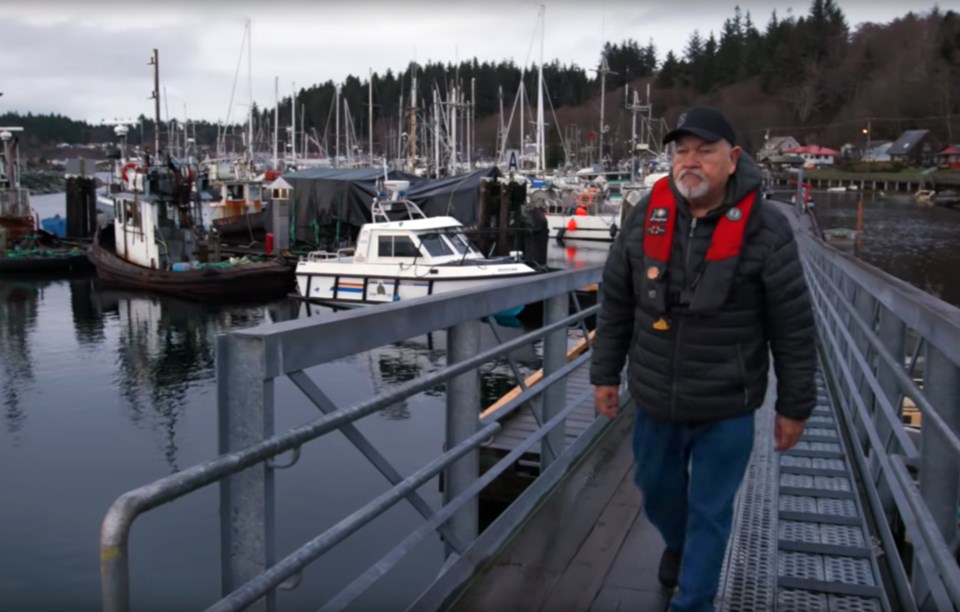A mother who lost a son. A fisherman who lost a cousin. A guide who nearly drowned.
Three people, haunted by the past, speak out in a new video from WorkSafe B.C. that takes aim at a major failing of Canada’s fishing industry — the fact that too many of its members still refuse to wear life-jackets.
Federal officials highlighted the problem last week in a report blasting the industry’s lax safety record.
The Transportation Safety Board said the 17 fishing deaths already this year — including three near Tofino — mark the highest total in more than a decade.
Kathy Fox, chairwoman of the safety board, singled out the spotty use of life-jackets or personal flotation devices (PFDs) as one of the key issues.
“The industry’s safety culture still has a long way to go before its members stop accepting far more risk than necessary,” she said.
WorkSafe B.C. raised similar concerns in releasing its new safety video, Turning the Tide: PFDs in the Fishing Industry.
The government agency says commercial fishing ranks as one of the most dangerous jobs in the province with 26 deaths from 2007 to 2017 — 16 of which were drowning-related.
The video highlights the human stories behind some of those statistics, and reveals how quickly a drowning can happen.
Sport-fishing guide Ben Angus describes leaning over the side of a boat to gaff a halibut, when a safety strap on the boat snapped.
He plunged face-first into the water wearing his steel-toed gum boots, long johns, jeans, a big wool sweater and rain gear, but no life-jacket.
Angus, who grew up on a float house and learned to swim at an early age, says he was no match for the weight pulling him down.
“With no air in your lungs, with all that gear on, I was losing ground,” he says on the video. He figures he was probably 30 or 35 feet deep when he spotted a fishing line from the boat and managed to wrap it around his arm.
That last act of desperation was enough to alert one of the clients on the boat and they reeled him to the surface.
“I tell that story to my customers twice a week,” he says. “You can be the best swimmer out there. You can be growing up on the water all your life. And it takes a millisecond for an accident like that to happen.”
The video also makes clear the lasting pain caused by the simple failure to wear a PFD.
Kim Pepler talks about losing her 25-year-son Ben Dick, who fell off a prawn fishing boat and drowned in 2014.
“It was devastating to his immediate family,” she says. “And everything just kind of stopped. Dead. We kind of stopped dead when he died.”
Chris Cook and Dennis Woloshuk tearfully describe the night the Westisle, a commercial fishing vessel, capsized in Pylades Channel off Gabriola Island in 2008. Five crew members survived, but 70-year-old Pat Alfred of Alert Bay drowned.
“When we left for the fishing grounds, there was no thought of me or anyone of my crew dying,” says Cook, the boat’s skipper and Alfred’s cousin. “And when I was coming back and Pat didn’t come back with me, that really hurt. And it hurts today.”
WorkSafe is hoping that message reaches other fishermen.
“We’re hoping for that realization that if something happens, it’s not just to you and that you could be at risk of losing your life or getting seriously injured, but how it affects the people you leave behind,” said Patrick Olsen, manager of WorkSafe’s prevention field service.
“I think if we can share this video and that message: ‘Think about your family, your friends, your co-workers, all the people that are affected if something happens to you and you drown because you’re not wearing a PFD.’ ”
Ultimately, he said, WorkSafe wants to see a “culture shift” so that putting on a life-jacket becomes a habit, just like putting on a seatbelt. The agency requires the use of PFDs when fishermen are working on the deck of a vessel and at risk of drowning.
Westisle crew member Dennis Woloshuk says on the video that if everyone aboard the vessel had been wearing life-jackets back in 2008, Alfred might still be alive today.
“This is real,” Cook adds. “When you get on that boat, you have a chance of rolling over. But if you get on that boat and you have a PFD on, you have a big chance of surviving.
“If I could save another person from drowning by wearing a PFD, by just doing this video, I’d be so happy.”



